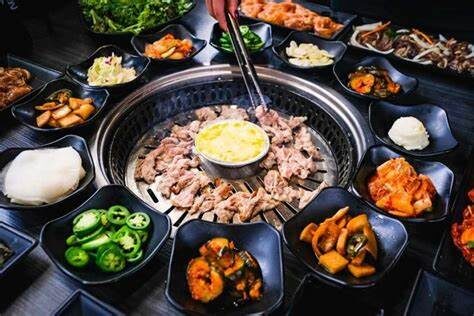
Korean dramas, or K-Dramas as they’re affectionately known, have taken the world by storm. From heart-fluttering romances to thrilling mysteries, these captivating series have captivated audiences with their compelling narratives, stunning visuals, and incredibly talented actors. But have you ever wondered what goes on behind the scenes of these captivating productions?
This article will delve into some fascinating behind-the-scenes facts about popular Korean dramas, offering a glimpse into the dedication, creativity, and hard work that goes into bringing these beloved shows to life.
1. The Power of Hallyu Wave:

The global popularity of K-Dramas, often referred to as the “Hallyu Wave,” is undeniable. This cultural phenomenon has not only introduced Korean entertainment to a worldwide audience but has also significantly impacted Korean culture and economy. K-Dramas have become a major source of cultural exchange, fostering a deeper understanding and appreciation of Korean language, history, and traditions.
2. The “Maknae” Effect: The Youngest on Set
In Korean culture, the youngest member of a group, known as the “maknae,” holds a special place. This dynamic often translates onto K-Drama sets. The youngest actor or actress on set is often showered with affection and care by the older cast members. This creates a strong sense of camaraderie and a supportive on-set environment.
3. The Importance of “Hwaiting!”
“Hwaiting!” is a Korean cheer that translates roughly to “Fighting!” or “Let’s do our best!” This word of encouragement is frequently used on K-Drama sets to motivate the cast and crew. It’s a constant reminder of the collaborative effort that goes into bringing a drama to life and the importance of teamwork and perseverance.
4. The Dedication to Detail:
K-Drama productions are renowned for their attention to detail. From intricate set designs and meticulously chosen wardrobe to the carefully crafted cinematography, every aspect of the production is meticulously planned and executed. This dedication to detail contributes significantly to the immersive and captivating viewing experience that K-Dramas offer.
READ ALSO: The AIDS Epidemic: A Retrospective on the Crisis, Activism, and Medical Breakthroughs
5. The Influence of Webtoons:

Producers often adapt many popular K-Dramas from webtoons, South Korean online comics. Webtoons have a massive following, and their adaptations often retain the unique visual style and engaging storytelling of the original source material. This synergy between webtoons and K-Dramas has created a dynamic and thriving entertainment industry in South Korea.
6. The “Second Lead Syndrome”: A Universal Struggle
Have you ever found yourself rooting for the second lead instead of the main romantic interest? This phenomenon, affectionately known as “Second Lead Syndrome,” is a common occurrence among K-Drama viewers. The writers often craft compelling and captivating secondary characters, making it difficult for viewers to choose sides in the romantic entanglements.
7. The Importance of Fan Service:
K-Drama producers keenly cater to their fans’ desires. From behind-the-scenes footage and live streams to fan events and meet-and-greets, K-Drama creators actively engage with their audience. This fan interaction fosters a strong sense of community and strengthens the bond between the actors, the production team, and the viewers.
8. The Impact of Social Media:
Social media plays a crucial role in the success of K-Dramas. Platforms like Twitter, Instagram, and TikTok are buzzing with discussions, fan art, and memes related to the latest K-Drama trends. Social media also allows fans from all over the world to connect and share their love for their favorite shows.
READ ALSO: Read The Shadow Guard Ebook Here
9. The Power of Music:
K-Drama soundtracks are legendary. From catchy pop songs to soulful ballads, the music plays an integral role in enhancing the emotional impact of the story. Many K-Drama soundtracks have achieved immense popularity, topping music charts and becoming cultural phenomena in their own right.
10. The Global Reach of Hallyu Wave:
The Hallyu Wave has transcended cultural boundaries, captivating audiences worldwide. K-Dramas have introduced Korean culture and language to millions of people around the globe, fostering a deeper understanding and appreciation for Korean society and its rich traditions.9
11. The Importance of Food:

Food plays a significant role in many K-Dramas, often serving as a source of comfort, connection, and cultural identity. From sizzling Korean BBQ to steaming bowls of bibimbap, food is frequently featured in scenes that showcase the characters’ daily lives and cultural values.
12. The Art of Storytelling:
Korean dramas captivate audiences with their compelling, emotionally resonant storytelling. They often explore complex themes such as family, love, loss, social justice, and the human condition.
13. The Dedication of the Cast and Crew:
The success of any K-Drama is a testament to the hard work and dedication of the entire cast and crew. From the actors and directors to the writers, producers, and crew members, countless individuals contribute their talents and expertise to bring these captivating stories to life.
READ ALSO: Summary of The Ace Sniper Wife
14. The Influence of K-Pop:

The popularity of K-Pop has undoubtedly contributed to the global rise of K-Dramas. Many K-Pop idols have transitioned into successful actors, further fueling the popularity of Korean entertainment.
15. The Future of K-Dramas:
The future of K-Dramas looks bright. Korean dramas captivate a growing global audience with their innovative and engaging content, ensuring their dominance in entertainment.
FAQs
- What makes K-Dramas so popular? K-Dramas captivate audiences with their compelling narratives, talented actors, stunning visuals, and cultural insights.
- How do I get started with watching K-Dramas? Check out popular streaming platforms such as Netflix, Viki, and Amazon Prime Video.
- What are some popular K-Drama genres? Popular genres include romance, comedy, action, fantasy, historical dramas, and thrillers.
- What is the typical filming schedule for a K-Drama? Filming schedules can be demanding, often requiring long hours and meticulous attention to detail.
- How can I learn more about Korean culture through K-Dramas? Pay attention to the cultural nuances, social etiquette, and traditional values depicted in the dramas.



